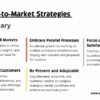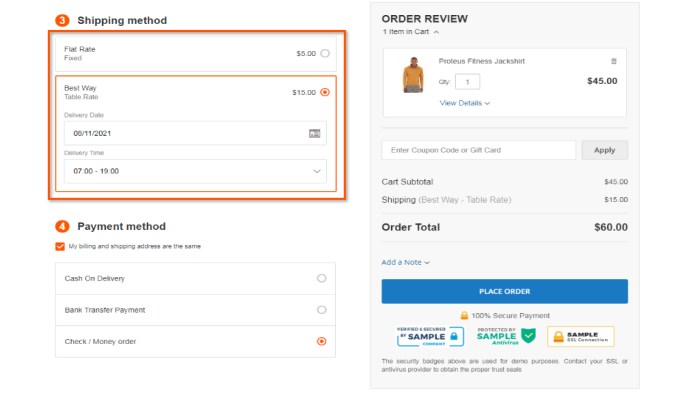Inbound marketing for professional services firms is a powerful strategy for attracting and converting clients. It focuses on creating valuable content and experiences that draw potential clients to your firm, rather than interrupting them with traditional outbound methods. This guide explores the core principles, content strategies, lead generation tactics, website optimization, and measurement methods necessary for success in this specialized sector.
This comprehensive approach covers everything from defining inbound marketing in the professional services context to crafting compelling content that resonates with your ideal clients. We’ll delve into lead nurturing, website optimization, and meticulous measurement to ensure you’re maximizing your return on investment.
Defining Inbound Marketing for Professional Services
Inbound marketing, in essence, flips the traditional sales model on its head. Instead of aggressively pursuing potential clients, inbound marketing attracts them by providing valuable content and experiences that address their needs and pain points. This approach is particularly well-suited for professional services firms, which often deal with complex solutions and long sales cycles. It focuses on building trust and establishing thought leadership, ultimately leading to qualified leads and stronger client relationships.Inbound marketing for professional services is a strategic approach that attracts ideal clients by creating valuable, relevant content that resonates with their specific challenges and aspirations.
It involves attracting visitors to a firm’s website, engaging them through valuable content, and nurturing them through the sales funnel until they become paying clients. This strategy prioritizes building relationships and demonstrating expertise, unlike the more aggressive outbound methods.
Core Principles of Inbound Marketing for Professional Services
Inbound marketing hinges on several key principles. It prioritizes providing value to potential clients, building trust through expertise, and nurturing relationships over direct sales pitches. This means understanding your target audience deeply, creating content that speaks directly to their needs, and providing resources that position your firm as a thought leader in your industry.
Differences Between Outbound and Inbound Strategies
Outbound marketing for professional services traditionally involves cold calling, direct mail campaigns, and advertising in industry publications. Inbound marketing, on the other hand, focuses on attracting clients through organic search results, social media engagement, and valuable content like blog posts, webinars, and case studies. The key difference lies in the initiation of the relationship: outbound marketing pushes information, while inbound marketing pulls clients in.
Inbound Marketing Tactics for Professional Services
Professional services firms can leverage various inbound marketing tactics to attract and convert prospects. These tactics often involve a content strategy that aligns with the firm’s expertise and the challenges faced by their target audience. This might include creating insightful blog posts, producing industry-specific reports, or hosting webinars on pertinent topics. The goal is to position the firm as a reliable source of information and expertise.
Comparison with Other Industries
While the core principles of inbound marketing remain consistent across industries, the tactics and implementation can differ. For example, B2C companies might rely heavily on social media advertising, whereas professional services firms often prioritize thought leadership pieces and online reputation management. This is because professional services deals with more complex problems and require a deeper level of trust building.
Crucial Elements of a Successful Inbound Strategy
A successful inbound marketing strategy for professional services firms requires a holistic approach. This involves a deep understanding of the target audience, the creation of high-quality, relevant content, and a robust strategy. This strategy should be integrated with a CRM system for tracking and managing leads, and should also include tracking key metrics to measure the effectiveness of the campaigns.
This holistic approach ensures that the marketing efforts are focused on the most promising leads, and that the content aligns with the firm’s overall business goals.
Content Strategy for Professional Services: Inbound Marketing For Professional Services Firms
Attracting ideal clients to professional services firms requires a strategic approach to content marketing. Inbound marketing strategies, focusing on valuable content, are essential for building trust, establishing expertise, and ultimately, driving qualified leads. This content strategy will Artikel key elements for creating engaging and effective content for professional services firms.A strong content strategy for professional services goes beyond simply publishing blog posts.
It’s about understanding your ideal client’s needs, creating content that resonates with them, and showcasing your firm’s unique value proposition. This strategy emphasizes creating a consistent flow of valuable content across multiple channels, attracting and nurturing leads through the entire buyer’s journey.
Content Calendar
A well-defined content calendar is crucial for maintaining a consistent flow of valuable content. It helps organize your content creation process and ensures that you are consistently providing valuable insights to your target audience. This calendar should align with your overall marketing goals and identify key themes and topics to cover throughout the year.
- Q1 2024: Focus on industry trends and challenges related to [specific industry]. Develop resources on strategic planning and cost optimization for clients.
- Q2 2024: Highlight case studies and success stories, showcasing the firm’s expertise and positive outcomes for clients. Feature thought leadership pieces from senior partners on current market developments.
- Q3 2024: Develop webinars and downloadable guides addressing specific client pain points, such as [pain point 1] and [pain point 2]. Promote the availability of these resources through social media and email marketing.
- Q4 2024: Showcase expert advice on the upcoming year’s trends. Include predictions based on previous performance and industry reports. Publish year-end summaries and look-ahead forecasts for the next year.
Blog Post Topics
Attracting ideal clients requires understanding their pain points and aspirations. Develop blog posts that address these needs and demonstrate your firm’s expertise.
- Client Success Stories: Showcase real-world examples of how your firm helped clients achieve their goals. Highlight the specific challenges faced and how your solutions generated positive results. Include quantitative data where possible (e.g., increased revenue, reduced costs).
- Industry Trends & Insights: Analyze current market trends and how they affect your target clients. Share valuable insights and predictions based on industry research and your firm’s expertise.
- Solutions to Specific Client Pain Points: Address common challenges faced by clients in the form of blog posts. Offer actionable advice and solutions to help them overcome these hurdles. For example, if clients struggle with [specific client pain point], create blog posts providing practical solutions.
- Expert Advice & Thought Leadership: Share your firm’s insights and perspectives on relevant industry topics. Position your firm as a trusted advisor and source of knowledge. Address topics like strategic planning, industry best practices, and emerging technologies.
Content Formats
Different formats cater to various learning styles and preferences. Variety in content format enhances engagement and attracts a broader audience.
- Blog Posts: Ideal for in-depth analysis and thought leadership.
- Case Studies: Showcasing tangible results for previous clients.
- Webinars & Online Events: Offering interactive learning opportunities.
- Infographics & Visual Content: Presenting complex information in an easily digestible format.
- Downloadable Resources (e.g., Guides, Templates): Providing valuable tools and resources to clients.
Case Study Structure
A compelling case study highlights the problem, solution, and results achieved by your firm.
| Section | Description |
|---|---|
| Introduction | Briefly introduce the client and their situation. Clearly state the problem they faced. |
| Challenge | Detail the specific challenges and pain points the client experienced. Use quantifiable data to illustrate the issue’s scale. |
| Solution | Describe the services provided by your firm to address the client’s challenges. Explain the approach taken and any unique strategies implemented. |
| Results | Showcase the tangible results achieved by the client, quantifying the impact of your services (e.g., increased revenue, reduced costs, improved efficiency). |
| Conclusion | Summarize the success story and reiterate the value proposition of your firm’s services. |
Thought Leadership
Creating valuable content for thought leadership demonstrates your firm’s expertise and builds trust with potential clients.
- Develop a Series of Articles: Focus on a specific topic. Each article builds on the previous one, gradually deepening the understanding and expertise. This demonstrates your in-depth knowledge and builds credibility.
- Address Industry Trends: Analyze current market trends and their impact on your target clients. Share your insights and predictions, providing valuable guidance for decision-making.
- Position as Industry Expert: Share unique perspectives and insights that differentiate your firm from competitors. This builds your firm’s reputation as a trusted advisor in the industry.
Educating Potential Clients
A series of articles can educate potential clients on a specific topic, showcasing your firm’s expertise and building trust.
- Choose a Relevant Topic: Select a topic that aligns with your firm’s expertise and addresses common challenges faced by your target clients.
- Create a Clear Structure: Organize the articles in a logical sequence, building upon each other. Each article should focus on a specific aspect of the topic, progressively deepening the understanding.
- Use Visual Aids: Incorporate visuals (charts, graphs, infographics) to enhance understanding and engagement.
Lead Generation and Nurturing
Inbound marketing for professional services firms hinges on attracting qualified leads and nurturing them effectively through valuable content and engagement. This process transforms passive website visitors into active prospects who are genuinely interested in the firm’s services. Nurturing these leads through a strategic sequence of communication builds trust and positions the firm as a trusted advisor. A strong lead generation and nurturing strategy can dramatically impact a firm’s bottom line by driving revenue and expanding market share.
Methods for Generating Qualified Leads
Generating qualified leads requires a multifaceted approach. Content marketing plays a critical role, providing valuable information to potential clients and establishing expertise. optimization ensures the firm’s content ranks highly in search results, driving organic traffic. Targeted social media campaigns can reach specific demographics and build brand awareness. Webinars and online events provide opportunities for interactive engagement and demonstrate expertise.
Email marketing can nurture leads and keep them informed about valuable resources. Strategic partnerships with complementary businesses can introduce the firm to new potential clients.
Converting Website Visitors into Leads
Converting website visitors into leads involves strategically placing calls-to-action (CTAs) throughout the website. These CTAs should be clear, concise, and compelling, encouraging visitors to provide their contact information in exchange for valuable resources like ebooks, white papers, or templates. Landing pages designed specifically for lead capture are essential for collecting information efficiently and effectively. Optimizing the website for mobile devices ensures that potential clients can access information easily on any device.
Importance of Lead Nurturing
Lead nurturing is crucial in professional services because it fosters trust and positions the firm as a thought leader. It involves ongoing communication with leads, providing valuable content that addresses their specific needs and pain points. This personalized approach helps build rapport and demonstrates expertise, ultimately increasing the likelihood of conversion. Nurturing leads through educational content helps build trust, establishes credibility, and positions the firm as a reliable source of information.
Lead Nurturing Email Sequence, Inbound marketing for professional services firms
A successful lead nurturing email sequence typically includes several emails designed to educate, engage, and encourage action. The first email might introduce the firm and its services, followed by emails that share valuable resources, case studies, or testimonials. Subsequent emails can highlight specific services or expertise related to the lead’s initial interest. Finally, a call to action for a consultation or next steps is essential.Example: Email 1: Welcome to [Firm Name].
We understand your challenges in [specific industry problem]. Email 2: Download our free guide on [relevant topic]. Email 3: Case study: How we helped [similar client] achieve [positive result]. Email 4: [Firm Name] webinar: [relevant topic]. Register now.
Email 5: Schedule a free consultation with our experts.
Tracking and Measuring Lead Generation Efforts
Tracking and measuring lead generation efforts provides valuable insights into what’s working and what needs improvement. Key metrics include website traffic, lead generation rate, conversion rates, and lead qualification rates. Utilizing analytics tools to track website behavior, email open and click-through rates, and social media engagement is critical. The data gathered provides insight into the effectiveness of different marketing strategies.
A dedicated system for tracking and analyzing data is essential for making informed decisions.
Comparison of Lead Generation Strategies
| Strategy | Description | Pros | Cons |
|---|---|---|---|
| Content Marketing | Creating and distributing valuable content (blog posts, articles, ebooks) | Builds brand authority, attracts organic traffic, positions as thought leader | Time-consuming, results may take time to appear |
| Search Engine Optimization () | Optimizing website and content for search engines | Drives organic traffic, cost-effective | Requires ongoing effort, results not immediate |
| Social Media Marketing | Engaging with potential clients on social media platforms | Reaches targeted audiences, builds brand awareness | Requires dedicated time and resources, results may be difficult to measure directly |
| Paid Advertising | Using paid channels (PPC, social media ads) | Fast results, highly targeted | Can be expensive, requires careful management to avoid wasted spend |
Website Optimization for Professional Services
A professional services firm’s website is more than just a digital storefront; it’s a crucial lead generation hub. A well-optimized website attracts potential clients, nurtures leads, and ultimately drives business growth. Inbound marketing principles are key to crafting a website that effectively converts visitors into paying customers. This involves understanding what attracts your target audience and tailoring your website’s content and design to meet their needs.Effective website optimization is crucial for attracting the right clients and showcasing the value proposition of a professional services firm.
It’s about aligning the website’s design and content with the needs and expectations of your ideal client. This involves more than just aesthetics; it’s about providing valuable information that demonstrates expertise and builds trust.
Key Elements for Website Optimization
Professional services websites need to be more than just pretty pictures. They need to effectively communicate expertise, credibility, and value. To achieve this, optimize these critical elements:
- High-Quality Content: Blog posts, articles, case studies, and white papers are essential. These demonstrate expertise, build trust, and position the firm as a thought leader in the industry. They provide valuable information to potential clients, showcasing the firm’s understanding of their challenges and how they can address them.
- Compelling Value Propositions: Clearly articulate the unique value the firm offers. What sets them apart from competitors? How can they solve specific client problems more effectively? Highlighting these differentiators early and often is critical.
- User-Friendly Navigation: A website should be easy to navigate, with clear calls to action and intuitive menus. Visitors should be able to find the information they need quickly and easily. Poor navigation leads to lost opportunities and a negative user experience.
Attracting the Right Client
A well-designed website is essential for attracting the right clients. The website’s design, content, and functionality should align with the needs and expectations of your ideal client profile. This targeted approach ensures that your marketing efforts are focused on those most likely to convert into paying customers.
- Visual Appeal: The website should reflect the firm’s brand identity, conveying professionalism and trust. Clean design, high-quality imagery, and a consistent color scheme are essential.
- Targeted Messaging: The content should speak directly to the specific needs and concerns of your ideal client. Use language that resonates with their professional background and challenges.
- Demonstrating Expertise: Showcase expertise through case studies, testimonials, and client portfolios. Highlight successful projects and demonstrate how the firm has helped similar clients achieve their goals.
Effective Calls to Action (CTAs)
Calls to action are critical for guiding website visitors toward desired actions, such as requesting a consultation or downloading a resource.
- Clear and Concise CTAs: Use action-oriented language, such as “Schedule a Consultation,” “Download Our Guide,” or “Request a Free Assessment.” Avoid jargon and make the desired action immediately apparent.
- Strategic Placement: Position CTAs strategically throughout the website, particularly on key pages like landing pages and blog posts.
- Compelling Language: Craft CTAs that are both clear and persuasive. Highlight the benefits of taking the next step and what visitors can gain.
Mobile-Friendliness
In today’s mobile-first world, a website that’s not mobile-friendly is missing a huge opportunity.
Inbound marketing for professional services firms often involves a complex web strategy. However, having multiple websites can significantly hurt your SEO efforts, as explained in this insightful article about why multiple domains are bad for SEO. why multiple domains are bad for seo Focusing on a single, strong domain with a cohesive inbound marketing strategy is crucial for attracting and converting clients in this competitive landscape.
- Essential for Accessibility: Ensure the website is easily accessible and usable on all devices, including smartphones and tablets. A mobile-friendly website enhances user experience and accessibility.
- Improved User Experience: A mobile-friendly design enhances the user experience by ensuring smooth navigation, easy readability, and efficient loading speed across all devices.
- Benefits: Mobile-friendliness is a crucial ranking factor for search engines. Google prioritizes mobile-friendly websites, ensuring higher search engine rankings.
Website Element Importance
| Element | Description | Importance |
|---|---|---|
| High-quality content | Informative and engaging content, demonstrating expertise | Builds trust, attracts ideal clients, positions as thought leader |
| Compelling value propositions | Clear articulation of unique value offerings | Highlights differentiators, attracts qualified leads |
| User-friendly navigation | Easy to navigate website with clear calls to action | Enhances user experience, reduces bounce rate |
| Visual appeal | Professional design reflecting brand identity | Conveys professionalism, builds trust |
| Targeted messaging | Content speaking directly to ideal client needs | Attracts qualified leads, improves conversion rates |
| Demonstrating expertise | Showcase successful projects and client testimonials | Builds credibility, positions as expert |
| Effective CTAs | Clear calls to action guiding visitors toward desired actions | Drives conversions, encourages engagement |
| Mobile-friendliness | Website accessible and usable on all devices | Enhances user experience, improves rankings |
Measuring and Analyzing Results
Inbound marketing for professional services firms is more than just creating engaging content; it’s about quantifying the impact of those efforts. Measuring results allows you to understand what’s working, what’s not, and ultimately, optimize your strategies for maximum effectiveness. This crucial step allows you to demonstrate the return on investment (ROI) and justify future investments in inbound marketing.Understanding the nuances of your target audience and their journey through your content is critical.
Analyzing campaign performance goes beyond simply looking at website traffic. It involves a deeper dive into the behavior of potential clients, understanding their needs, and tailoring your approach to address them effectively.
Inbound marketing for professional services firms is all about attracting clients organically, and AI is playing a huge role. Understanding how AI is trained is key to leveraging its potential effectively. For instance, by learning about the intricate process of how is AI trained , you can optimize your content strategies for better results. This knowledge will help you tailor your inbound marketing efforts to resonate with your target audience more profoundly.
Key Metrics for Professional Services Inbound Marketing
Understanding what to measure is essential for evaluating campaign success. Different metrics offer different insights into various aspects of your inbound marketing strategy. The following metrics provide a comprehensive view of performance.
- Website Traffic: Track the number of visitors to your website, their sources (e.g., organic search, social media, referrals), and the pages they visit. This helps understand which channels are driving the most traffic and which content resonates most.
- Lead Generation: Measure the number of leads generated through your inbound efforts. This includes contact form submissions, webinar registrations, and other interactions. Analyze the quality of these leads by considering factors like their level of engagement and their potential to convert into paying clients.
- Conversion Rates: Calculate the percentage of leads who convert into clients. A higher conversion rate indicates improved effectiveness in nurturing leads and showcasing the value proposition.
- Customer Acquisition Cost (CAC): This metric shows the cost of acquiring a new client through inbound marketing. By understanding CAC, you can optimize your strategies to reduce costs and maximize returns.
- Customer Lifetime Value (CLTV): This metric represents the total revenue a customer is expected to generate throughout their relationship with your firm. It’s crucial to demonstrate the long-term value of inbound marketing initiatives.
Analyzing Campaign Performance
A comprehensive analysis involves a structured approach to understanding the effectiveness of your inbound marketing campaigns.
- Data Collection: Gather data from various sources, including website analytics platforms, CRM systems, and marketing automation tools. Ensure data is accurate and up-to-date.
- Data Interpretation: Translate raw data into meaningful insights. Identify trends and patterns in the collected data to understand what’s working and what needs improvement.
- Reporting and Visualization: Create reports that summarize key findings and use visuals like charts and graphs to communicate insights effectively. Regular reporting is vital for staying informed about campaign performance.
- Iteration and Optimization: Use the insights from your analysis to make adjustments to your campaigns. Continuously refine your strategies to improve their effectiveness.
Key Performance Indicators (KPIs)
KPIs are quantifiable metrics used to track progress toward specific goals. Choosing the right KPIs is essential for effective monitoring and evaluation.
- Website traffic from organic search, social media, and referrals.
- Number of leads generated through different channels (e.g., contact forms, downloadable content).
- Conversion rates from leads to clients.
- Average time spent on website pages.
- Bounce rate.
- Customer satisfaction ratings.
Importance of A/B Testing
A/B testing is a crucial element in optimizing your inbound marketing campaigns. By comparing different versions of elements like landing pages or email campaigns, you can identify which performs better.
- Landing Page Optimization: Test different headlines, calls to action, and forms to optimize lead capture.
- Email Marketing Optimization: Test different subject lines, email content, and call-to-actions to improve open and click-through rates.
Report Template for Inbound Marketing Performance
A structured report template facilitates the analysis of collected data.
| Metric | Target | Actual | Difference | Analysis | Action Items |
|---|---|---|---|---|---|
| Website Traffic (unique visitors) | 10,000 | 12,500 | +2,500 | Improved and social media campaigns | Maintain current strategies |
| Lead Generation (contact form submissions) | 500 | 650 | +150 | Effective content marketing | Enhance content strategy |
| Conversion Rate (leads to clients) | 10% | 12% | +2% | Improved value proposition | Maintain current value proposition |
Case Studies and Examples
Inbound marketing isn’t just a theory; it’s a proven strategy for professional services firms to attract, engage, and convert clients. Case studies offer compelling evidence of its effectiveness, demonstrating how firms can leverage various tactics to achieve measurable results. By examining successful campaigns, we can gain insights into strategies that work and adapt them to our own needs.Understanding how other firms have implemented inbound marketing successfully is crucial for developing a customized strategy.
These examples provide actionable steps and inspiration for professional service firms looking to transform their marketing approach. The following sections offer real-world applications of inbound marketing, highlighting specific techniques and their impact.
A Successful Inbound Marketing Campaign for a Law Firm
A prominent law firm specializing in intellectual property saw a 45% increase in qualified leads within six months after implementing an inbound marketing strategy. Key elements of their campaign included creating a comprehensive blog focusing on current legal issues, publishing thought leadership articles, and optimizing their website for relevant s. They also hosted webinars on trending topics, driving significant traffic and engagement.
This strategy established them as thought leaders in the field, attracting clients seeking expert guidance. The firm’s detailed research identified the terms most sought after by potential clients, enabling them to target their content effectively.
Examples of Different Professional Services Firms Using Inbound Marketing
Numerous professional services firms have adopted inbound marketing principles. Accountants, for instance, have utilized blog posts on tax strategies and financial planning to attract clients seeking expertise. Consulting firms have created case studies demonstrating the positive impact of their services, thereby showcasing their competence and reliability. Engineering firms have leveraged webinars to highlight their technological advancements and innovative solutions, thereby attracting clients looking for advanced engineering solutions.
These examples illustrate the adaptability of inbound marketing across various professional service disciplines.
Inbound marketing for professional services firms is all about attracting clients organically, right? Well, the recent WooCommerce rebrand, offering lessons for gaining a competitive edge, like this one , provides valuable insights. Focusing on clear messaging and a compelling brand story, just like a well-executed inbound strategy, is key to attracting the right customers. Ultimately, these lessons translate directly into building a stronger, more attractive presence for your firm.
Content Marketing for Lead Generation
Professional services firms often use content marketing to nurture leads and establish their expertise. For example, a financial advisory firm created a series of downloadable guides on investment strategies. These guides, positioned as valuable resources, were downloaded by numerous individuals, attracting potential clients who then contacted the firm. The firm also published articles on relevant investment topics on their blog, which garnered significant traffic from individuals searching for such information.
This demonstrated how valuable, high-quality content can be used to generate leads and position the firm as an industry leader.
Webinars and Online Events for Client Attraction
Webinars and online events are powerful tools for engaging prospects and generating leads. A real estate firm hosted a series of webinars on market trends and investment strategies, attracting numerous attendees. By providing valuable insights, the webinars positioned the firm as a trusted source of information. The online events further fostered engagement by allowing attendees to ask questions and interact directly with firm representatives.
The firm also followed up with attendees who registered for webinars, nurturing leads and converting them into clients.
and Social Media for Website Traffic
Search engine optimization () and social media play a crucial role in driving traffic to a professional services firm’s website. A marketing consultancy optimized its website for relevant s, enabling it to rank higher in search engine results pages. This strategy increased organic traffic and generated more leads. Additionally, the firm actively engaged on social media platforms, sharing valuable content and engaging with potential clients.
This approach effectively promoted their expertise and attracted a wider audience. Through consistent engagement and informative content, they increased their visibility and established their presence in the industry.
Key Strategies Behind a Successful Case Study
The law firm’s success stemmed from a combination of targeted content creation, strategic implementation, and consistent engagement with potential clients. Their detailed research, focused on specific terms related to intellectual property law, enabled them to target their content effectively. Furthermore, the firm’s comprehensive blog on current legal issues positioned them as thought leaders in the field.
This combined strategy generated a considerable increase in qualified leads.
Tools and Resources

Inbound marketing for professional services firms demands a multifaceted approach, leveraging technology and resources to effectively reach and engage target audiences. Beyond the core strategies, the right tools are crucial for streamlining operations, optimizing campaigns, and ultimately, driving results. This section explores the essential tools and resources needed for success.Effective inbound marketing hinges on a comprehensive toolkit. These tools go beyond basic website design and content creation, enabling automation, analytics, and sophisticated targeting to nurture leads and ultimately convert them into clients.
Essential Tools for Inbound Marketing
A robust inbound marketing strategy for professional services requires a suite of tools to automate tasks, analyze data, and manage campaigns effectively. Key tools include CRM systems for managing client interactions, marketing automation platforms for nurturing leads, and analytics dashboards to track performance.
- CRM (Customer Relationship Management) Systems: CRMs are vital for organizing and managing client interactions. They track communication history, sales opportunities, and other important details, allowing for personalized follow-up and improved client relationships. Examples include Salesforce, HubSpot CRM, and Zoho CRM.
- Marketing Automation Platforms: These platforms automate repetitive tasks like email marketing, lead nurturing, and social media posting, freeing up time for more strategic activities. Key features include automated email sequences, lead scoring, and campaign tracking. Examples include HubSpot Marketing Hub, Marketo, and Pardot.
- Analytics Dashboards: These tools provide valuable insights into campaign performance, allowing for adjustments and optimization in real-time. They track key metrics like website traffic, lead generation, and conversion rates. Popular options include Google Analytics, HubSpot Analytics, and Mixpanel.
Resources for Learning Inbound Marketing
Staying updated on the latest trends and best practices in inbound marketing is essential. Numerous resources are available to help professional services firms enhance their strategies and learn new techniques.
- Industry Blogs and Publications: Numerous industry blogs and publications offer insights into inbound marketing best practices, case studies, and the latest trends. These resources often feature articles, webinars, and podcasts that can provide valuable information.
- Online Courses and Workshops: Platforms like Coursera, Udemy, and HubSpot Academy offer courses and workshops on inbound marketing, providing a structured learning experience. These resources often provide practical exercises and real-world examples.
- Inbound Marketing Conferences and Events: Attending conferences and events provides opportunities to network with industry experts, learn about new tools and strategies, and stay ahead of the curve.
Marketing Automation Tools for Professional Services
Professional services firms can leverage marketing automation tools to streamline their inbound marketing efforts. These tools automate tasks, nurture leads, and improve overall efficiency.
- Lead Scoring: Prioritizing leads based on their likelihood of conversion is essential for efficient follow-up. Marketing automation tools provide lead scoring capabilities, allowing for the prioritization of high-potential leads. This can save significant time and resources.
- Automated Email Sequences: Email marketing plays a crucial role in professional services inbound strategies. Automated email sequences nurture leads through personalized communications at specific points in their journey, such as post-form submission, product discovery, and demo requests.
- Personalized Content Delivery: Delivering relevant content to prospects is key to capturing their attention and building trust. Marketing automation tools can personalize content based on lead behavior and preferences, improving engagement and conversion rates.
Case Studies and Examples of Successful Inbound Marketing
Examining successful case studies is critical for understanding how to implement effective inbound marketing strategies in the professional services sector. Numerous examples showcase the impact of well-executed strategies.
- Case Study 1: [Description of a hypothetical case study focusing on a specific professional service firm, highlighting their inbound marketing strategies and results. This section would include quantifiable results, such as increased leads, conversions, or revenue.]
- Case Study 2: [Description of a hypothetical case study focusing on a different professional service firm, highlighting their inbound marketing strategies and results. This section would include quantifiable results, such as increased leads, conversions, or revenue.]
Last Recap

In conclusion, inbound marketing for professional services firms is a multifaceted approach that demands careful planning, consistent execution, and a deep understanding of your target audience. By implementing the strategies Artikeld in this guide, professional services firms can establish a strong online presence, attract qualified leads, and ultimately achieve sustainable growth. This detailed guide will serve as your roadmap to successfully navigating the complexities of inbound marketing in the professional services industry.






